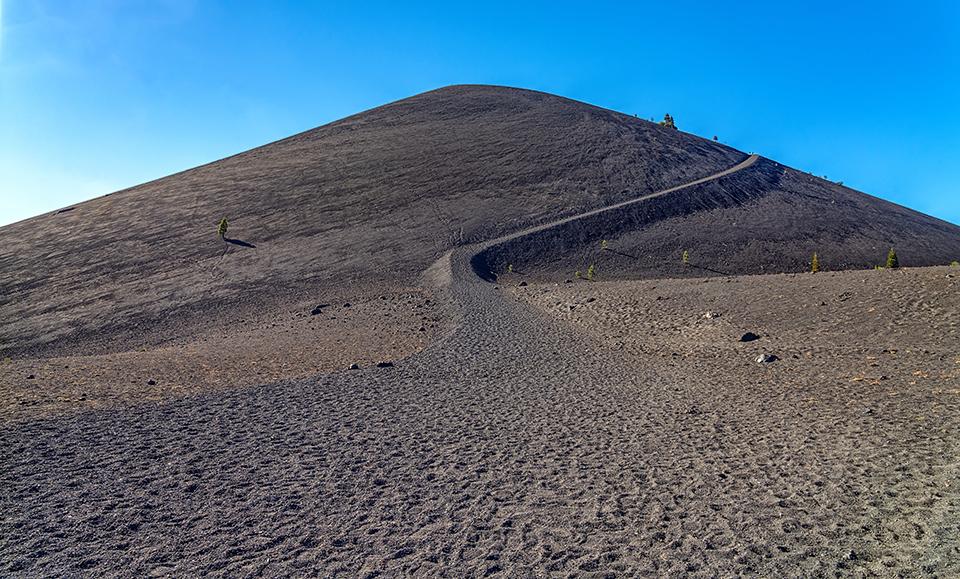
The spiral curve of Cinder Cone Trail, Lassen Volcanic National Park / Rebecca Latson
According to a Traveler 2014 article, if there’s one trail you should wander while visiting Lassen Volcanic National Park, it’s the Bumpass Hell Trail, situated within the heart of the park. I personally believe there are three trails you should attempt to tackle in this park (health and time permitting): Bumpass Hell, Lassen Peak, and Cinder Cone trails. Granted, the Lassen Peak and Cinder Cone trails are quite the challenge (a mild understatement) but the rewards are worth the effort. I know that from hiking the Cinder Cone Trail.
I first viewed an image on Flickr of this trail spiraling gracefully up to the summit of the cinder cone and knew right away I wanted to visit Lassen if for no other reason than to hike this trail. OK, that plus I knew the only way I’d really get great photos of the Painted Dunes would be to reach Cinder Cone’s summit.
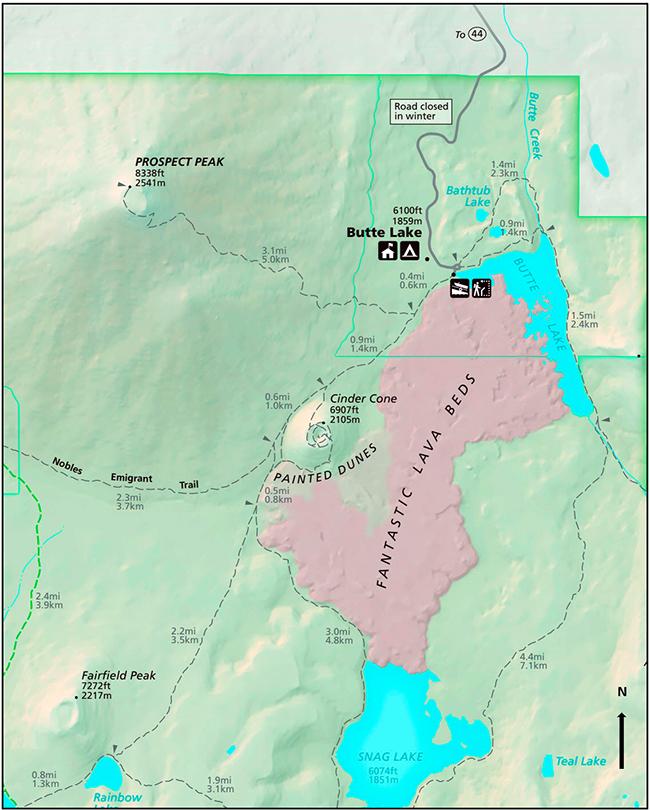
Area map of Cinder Cone and trails, Lassen Volcanic National Park / National Park Service

Forest Road 32N21 to Butte Lake, Lassen Volcanic National Park / Rebecca Latson
Located in the more remote northeast section of the park and accessed via five-mile gravel Forest Road 32N21 to Butte Lake Campground from Highway 44, this four-mile round trip hike begins near the restrooms at Butte Lake.

Butte Lake and Fantastic Lava Beds, Lassen Volcanic National Park / Rebecca Latson
With the consistency of a sand-and-gravel beach similar to Rialto Beach in Olympic National Park, the trail leads you over pumice sand and volcanic gravel through a sunlight-dappled forest cleared of woodland detritus as a result of the 2021 Dixie Fire, walled on one side by Fantastic Lava Beds blocky black rock.

A wall of blocky lava rock alongside the trail, Lassen Volcanic National Park / Rebecca Latson

A cleared forest floor, Lassen Volcanic National Park / Rebecca Latson
In addition to hiking over fascinating volcanic geology, you are trekking through history, as well. Cinder Cone Trail follows a portion of the Nobles Emigrant Trail, a branch off the California National Historic Trail considered a more direct route into the Sacramento Valley back in the 1850s.
The first 1.2 miles brings you to the base of 800-feet-tall Cinder Cone where you’ll catch eye-level views to your left not only of the lava beds but also the Painted Dunes - pumice and volcanic ash layers atop once-searing-but-now-solidified lava that oxidized the minerals of the ash to create the brilliant orange, yellow, and tan hues giving the landscape its moniker.
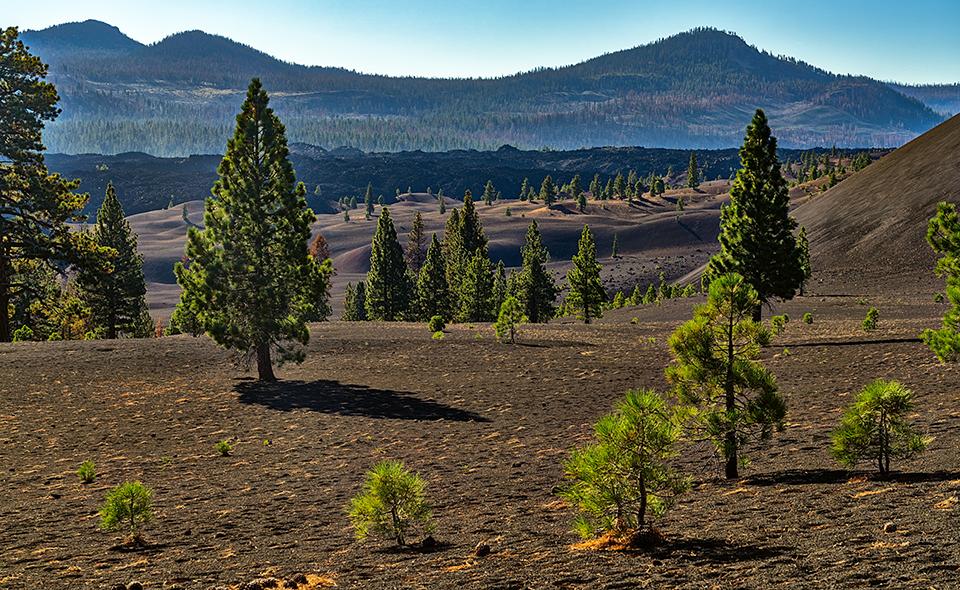
An eye-level view of the Fantastic Lava Beds and the Painted Dunes, Lassen Volcanic National Park / Rebecca Latson
Directly ahead, beyond the sparse Jeffrey pines maintaining their hold beneath the black unconsolidated volcanic soil, the trail curves around and up to Cinder Cone’s summit. This is the challenging portion that the National Park Service calls “heart thumping” and summitpost.org describes as “wretched.” For a relatively out-of-shape gal like myself who stopped numerous times along that last 200 feet of very loose, very unconsolidated pumice and gravel, I concur. But oh, the views.
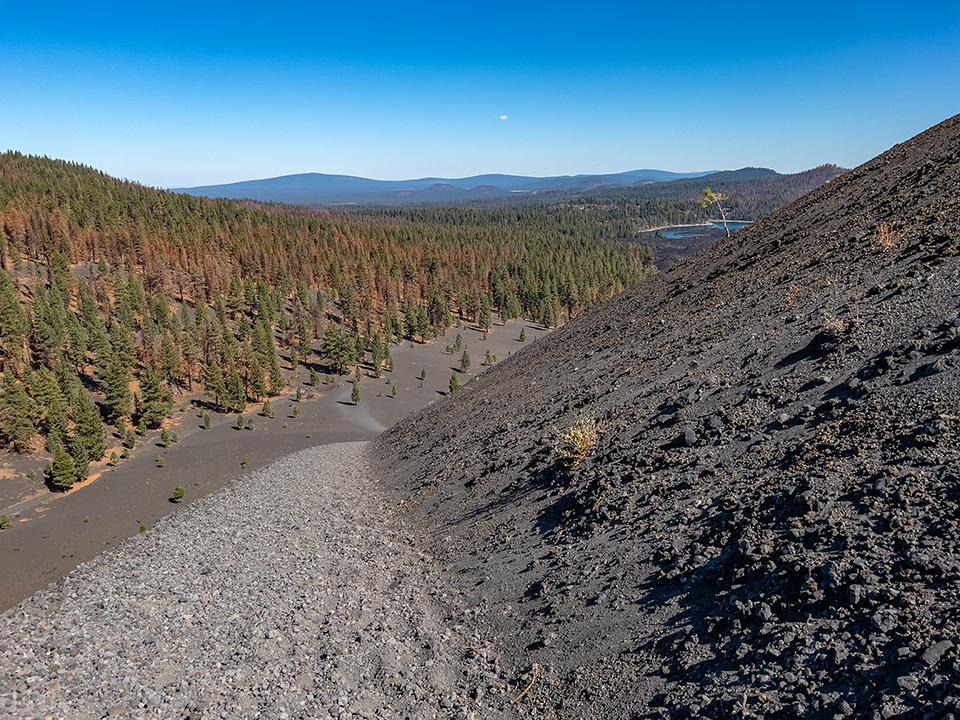
Looking back down during that final push to the summit, Lassen Volcanic National Park / Rebecca Latson
Upon reaching the top, catch your breath and look around.

Cinder Cone crater trails, Lassen Volcanic National Park / Rebecca Latson
From the lofty vantage point of Cinder Cone’s summit you’ll have 360-degree views of the surrounding landscape including Lassen Peak, Prospect Peak, the Painted Dunes, Fantastic Lava Beds, Snag and Butte lakes, and the continuance of the Nobles Emigrant Trail.
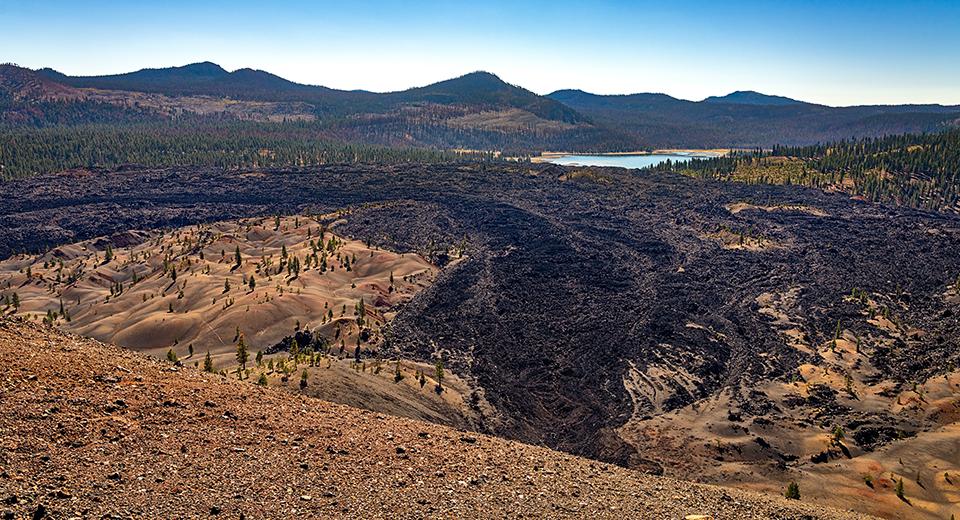
Fantastic Lava Beds, Snag Lake, and Painted Dunes seen from Cinder Cone's summit, Lassen Volcanic National Park / Rebecca Latson

Lassen Peak in the background and the Nobles Emigrant Trail below, Lassen Volcanic National Park / Rebecca Latson
The summit view is where you’ll really be able to appreciate the colors and ovoid patterns of Painted Dunes.

The colors and patterns of the Painted Dunes, Lassen Volcanic National Park / Rebecca Latson
You can even hike down into the volcano itself, although you might not want to expend any more energy hiking down and back up from a slightly claustrophobic trail end.
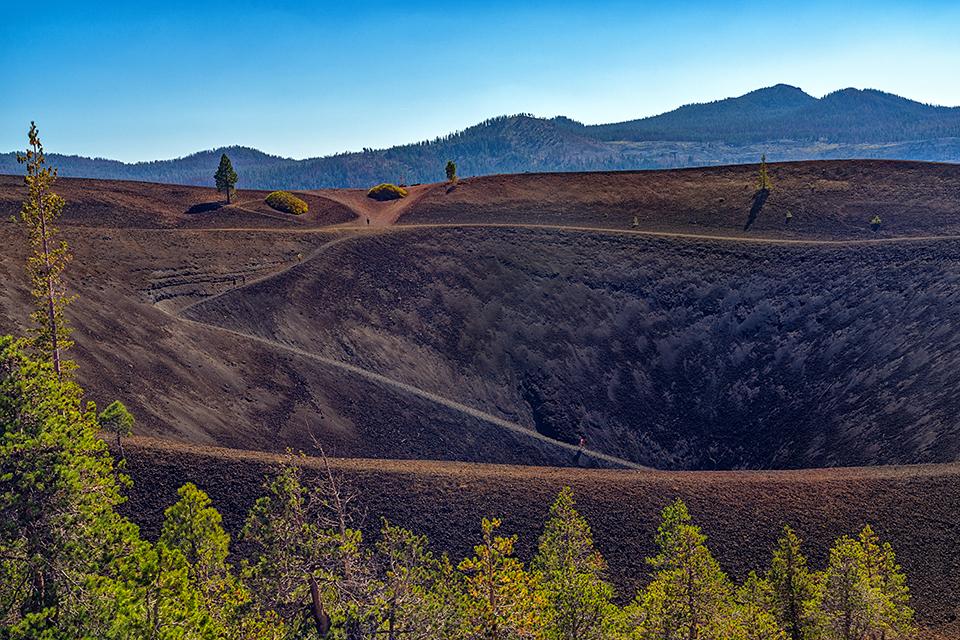
August through September is a great time to hike Cinder Cone Trail. The snow is gone (or almost gone) and the daytime temperature is milder. It’s exposed out there once you begin your ascent, so wear a hat and sunscreen. Pack snacks to replenish your energy and definitely carry plenty of water - more than you think you'll need.
Here's something I learned on my own about which a passing hiker reminded me: hiking poles alleviate (to a point) the strenuousness of Cinder Cone’s last push to the summit. I made use of my tripod as a hiking stick, which helped some, but if I ever attempt this trail again (and I’d really like to), I’ll strap the tripod to my backpack and use two hiking poles to inch me toward the top. By the way, those poles help as much hiking back down Cinder Cone as they do the hike up.
Small-to-no crowds, plenty of exercise, and amazing views should encourage you to add Cinder Cone Trail to your national park trail bucket list for Lassen Volcanic National Park.


